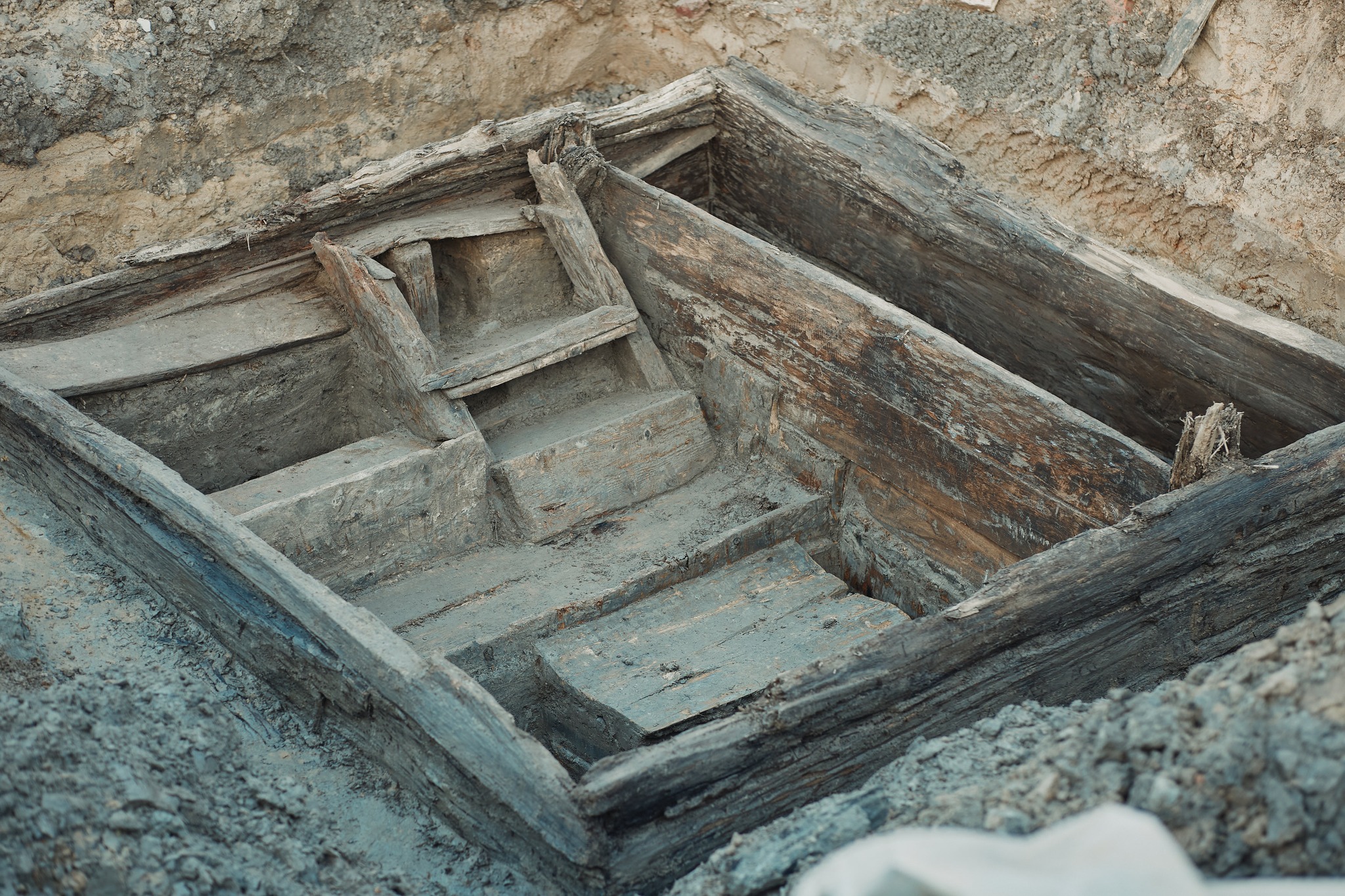Unique historic wooden mikvah discovered in Oświęcim
20 February 2023

During the ongoing construction of a parking lot on Bulwary Street, in the vicinity of the Great Synagogue Memorial Park, archaeologists recently uncovered another finding related to the town’s Jewish past. This time it is the well-preserved remains of the first wooden mikveh. It was situated slightly below the brick one, the remains of which were found just a few weeks ago.
After initial identification, it appears that the finding dates back to the 17th or 18th century, although the preserved wooden structure may be even older. The origins of Jewish history in Oświęcim reach back to the second half of the 16th century. At that time the first synagogue and cemetery were established in the area.
In Poland, mikvehs were usually separate buildings, forming a complex together with other religious institutions of Judaism. It can therefore be assumed that the preserved remains are related to this very earliest period of Jewish existence in Oświęcim.
The uncovered remains of the mikveh are a unique discovery, undoubtedly on a European scale. It is exceptional not only for the period of its origin, but also for its state of preservation and the fact that virtually no traces of wooden Jewish buildings associated with religious ritual have survived in this part of Europe.
One of the Hasidic legends, quoted by Yehuda Kinderman in “Sefer Oshpitzin,” a book of remembrance of Oświęcim’s Jews published in 1977, is also associated with this very wooden Oświęcim mikveh. It is the story of three great tzaddiks, namely Elimelech of Leżajsk (1717-1787), his brother Zusja of Annopol and Shlomo Bochner of Chrzanów. During their journey, they met in Oświęcim. – They spent the whole day there, but following a rule they adopted on their journey, they did not stay at night in the same place where they spent the whole day. This time, however, at Elimelech’s request, they stayed in Oświęcim, and the tzaddik stayed overnight in a small mikveh, which has since been called “Reb Elimelech’s” mikveh.
Photo by Andrzej Rudiak




